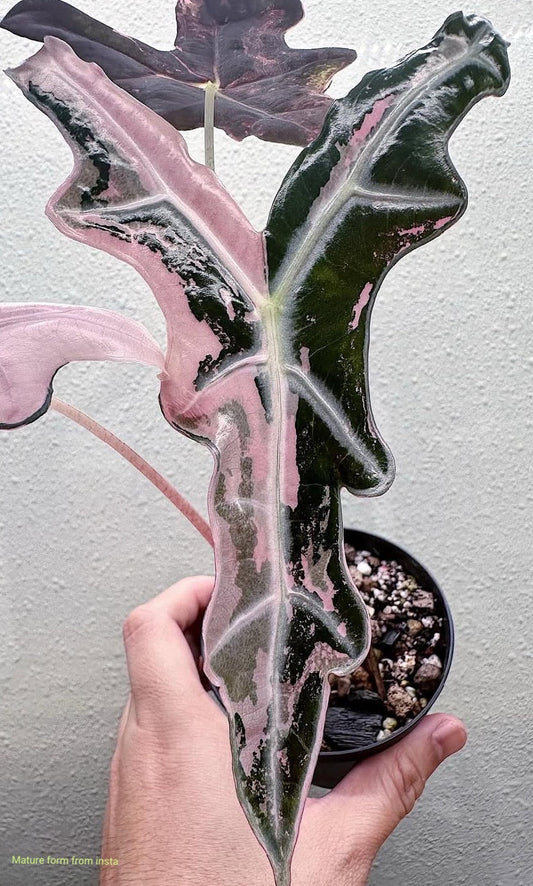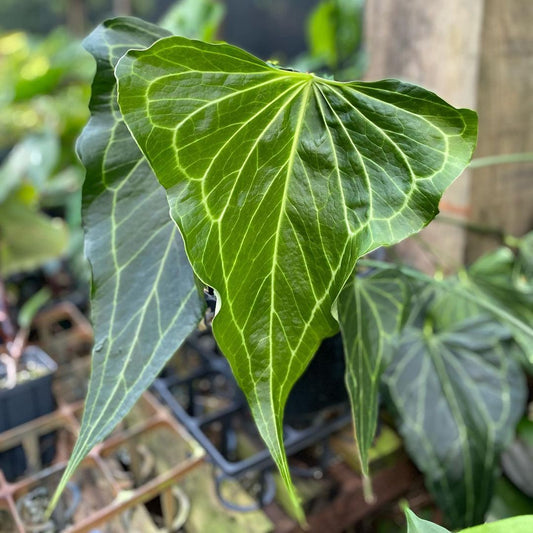🌿 Rare Houseplants Worth Investing In (And What to Avoid) in 2025
In the ever-evolving world of rare houseplants, collectors aren’t just buying for the aesthetics—they’re buying for returns. More and more plant lovers are turning their hobby into a sustainable cycle: buy a rare plant, propagate it, sell the cuttings, and use the profits to fund the next treasure on the wish list.
It’s a smart and rewarding strategy—if you invest wisely.
The houseplant market is dynamic. A plant that sells for $300 today might be worth $50 within a few months once the market floods. To avoid “green losses” and build a financially sustainable collection, it’s essential to understand which plants hold their value—and which ones don’t.
Let’s discuss the smartest rare plant investments for 2025, and what you might want to skip. This article is based on our team's opinion solely.
✅ Smart Rare Plant Investments (With Real Return On Investment Potential)
These plants grow well, propagate easily, and have stable or rising market demand. Ideal for hobby growers looking to offset costs or resell for profit.
🌿 1. Variegated Monsteras (Albo, Aurea, Mint, etc.)
A timeless favorite for rare plant collectors. While prices have dropped since the 2020 boom, the base price has stabilized—and demand is still stable. Rooted cuttings typically sell for $30 to $100, depending on the level of variegation and conditions.
These plants are ideal for propagation: one healthy node can become a whole new plant, offering great value over time.
Why it’s worth it:
-
Easy to propagate via cuttings
-
Strong resale demand
-
Visually striking and popular classic
🌿 2. Anthuriums
These velvet-leaf beauties are more than just decorative. Anthuriums are tough, fast-growing, and can adapt to a wide range of growing environments. Best of all? They produce seeds. Lots of them.
In ideal growing condition, mature plants can yield hundreds of seeds, each selling for at least $10–$20 as seedlings. That means one fruiting event could earn you $200–$1,000+ if managed correctly.
Also worth noting: Anthuriums are not an easy plant to tissue culture (to us), while pollination and hybridization can produce better yield and cost less.
Why it’s worth it:
-
Prolific seed production = high ROI
-
Not widely tissue-cultured = less market saturation
-
Great for hybridization projects
-
Durable and adaptable
🌿 3. Alocasias and Variegated Alocasias
2025 is shaping up to be a massive year for variegated Alocasias. With eye-catching foliage and increased demand from collectors, prices are rising again. Under the right conditions, these plants grow fast and produce multiple corms, each with resale potential.
For example, a small Alocasia 'Triangularis' bought for $19.99 could produce 10 corms in a few months. That’s easily $100+ in value from just one cycle.
⚠️ Be warned: Alocasias are divas. They need the right humidity, light, and warmth to thrive.
Why it’s worth it:
-
High collector demand, especially pink variegated Alocasias
-
Fast propagation through corms
-
Rare cultivars can sell for $100–$1,000+
-
Ideal for experienced growers with stable setups
🚫 Rare Plants That Are Poor Investments
While beautiful, these plants often lose value fast due to ease of propagation or oversaturation in the market. Buy them for enjoyment—but don’t expect a return.
🌱 1. Scindapsus
Scindapsus may look rare and exotic, but they grow fast—especially in high humidity. In fact, they often produce a new leaf every two weeks. While they’re satisfying to grow, they flood the market quickly, leading to steep price drops.
Market trend: prices drop by 50% or more within 3–6 months of trending. Cuttings that once sold for $300 can end up at $10–$20 or less.
Acceptable price range: $5–$50 per rooted cutting
🌿 2. Hoyas
Many hoyas are resilient, low-maintenance, and easy to propagate—sometimes too easy. They root fast, can somehow tolerate low humidity and light, and even thrive in cooler temperatures.
That accessibility leads to oversupply. New hoya cultivars that launch at $200 often drop to $20 or less within 6 months as they flood collector groups and local markets.
Acceptable price range: $5–$70 per rooted cutting
🌱 3. Philodendrons
While some philodendrons are still worthwhile, many are now mass-produced via tissue culture, which means one thing: the rarity is gone.
Varieties like White Princess, Pink Princess, Florida Beauty, and Melanochrysum used to be high-value—but now they're widely available and heavily discounted.
Add to that the fact that philodendrons grow quickly, root easily (thanks to aerial roots), and can tolerate most conditions, and you’ve got a recipe for oversaturation.
Acceptable price range: $20–$170 per plant (based on variegation, current rarity and sizes)
💚 One Final and Important Reminder
While we’ve talked a lot about prices, value, and returns—the most important reason to grow plants is joy.
If you're buying a plant simply because it makes you happy, go for it. You don’t need to justify it with numbers. Some plants may never pay you back in money—but they’ll reward you with beauty, peace, and daily satisfaction.
This guide is meant to help those who are looking to grow sustainably or resell—but not to shame any collector’s choices. Grow what makes your heart sing. That’s the best investment of all.



